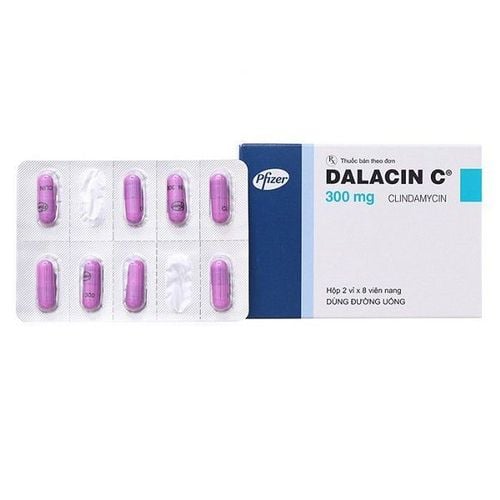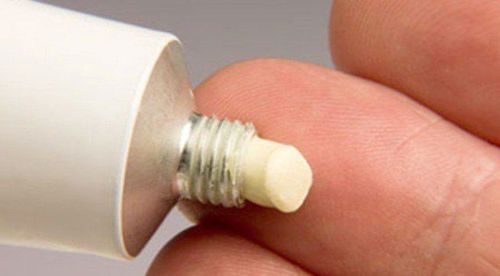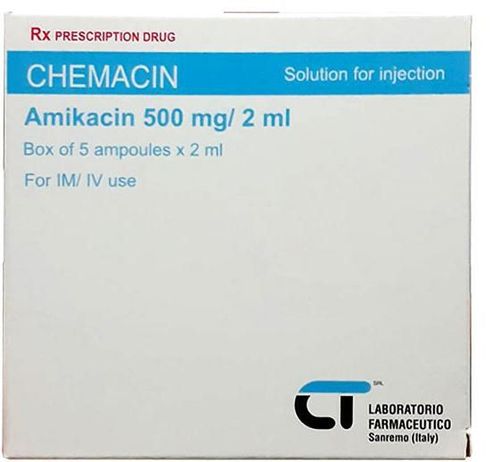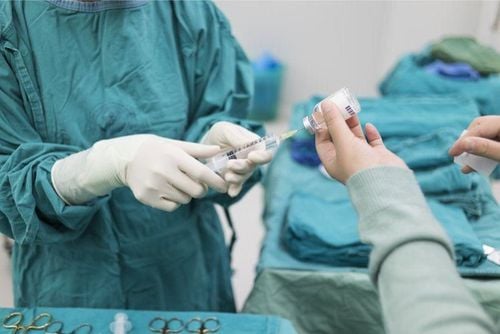This is an automatically translated article.
Elisen is a 2nd generation cephalosporin antibiotic with a broad spectrum of antibacterial activity. The drug has the main ingredient Cefoxitin, the content of 1g and is used in the treatment of bacterial infections. For more information about this drug, please read the article below:
1. What is Elisen 1g?
Elisen has a broad spectrum of antibacterial activity, the bactericidal effect is due to inhibition of bacterial cell wall synthesis. Cefoxitin is stable to most β-lactamases of Gram-negative and Gram-positive bacteria. The spectrum of action of the drug includes: aerobic gram-positive and gram-negative bacteria, some strains of gram-positive and gram-negative bacteria. Cefoxitin is widely distributed into body fluids and tissues including bile, pleural, and synovial fluid. Approximately 50-80% of Cefoxitin is bound to plasma proteins. The time that the blood concentration of cefoxitin is halved is 0.7-1.1 hours. Approximately 85% of cefoxitin is excreted by the kidneys after 6 hours as unchanged drug.
2. What are the uses of Elisen 1g?
Elisen is used in the treatment of infections caused by bacteria sensitive to cefoxitin such as:
Lower respiratory tract infections including lung abscesses and pneumonia Urinary tract infections. Intra-abdominal infections, including abdominal abscesses and peritonitis. Gynecological infections including endometritis, pelvic infections Skin, blood, bone and joint infections. The drug is used in the treatment of uncomplicated gonorrhea but is not considered a first choice drug in the treatment of gonorrhea. Elisen is also used in the prevention of infections during surgery such as cesarean section, hysterectomy, gastrointestinal surgery. Do not use the drug in case of hypersensitivity to cephalosporins, history of anaphylactic reactions to penicillins.
3. Dosage and how to use Elisen
3.1. How to use The drug is prepared in powder form for injection used in deep intramuscular injection, slow intravenous injection for 3-5 minutes or intravenous infusion. Dissolve 1g of Cefoxitin in 10ml of solution for injection such as distilled water for injection, 0.9% saline, 5% dextrose.
3.2. Dosage Dosage should be calculated based on the susceptibility of the causative organism, the patient's condition and the severity of the infection. The drug is used according to the instructions of the doctor or you can refer to the manufacturer's recommended dose below:
Dosage in treatment:
Adults: usually 1-2g / time 6-8 apart hour/time. Uncomplicated infections such as pneumonia, skin infections, urinary tract infections; 1g intravenously every 6-8 hours, 3-4g/day. Infections of moderate or higher severity: Elisen is administered intravenously 1g every 4 hours or 2g every 6-8 hours; total dose 6-8g/day. Infections requiring high doses of antibiotics; intravenously 2g every 4 hours or 3g every 6 hours, total 12g/day. Drugs used in the treatment of uncomplicated gonorrhea: cefoxitin 2g intramuscularly as a single dose and oral probenecid. Cefoxitin 1g can be used in patients with impaired renal function, patients on hemodialysis, but the dose should be adjusted carefully before use. For children: Children over 3 months old dose from 80-160 mg/kg body weight per day divided into 4-6 times. For severe and serious infections you may be given a higher dose of the drug. The total dose should not exceed 12g/day. The safety of the use of cefoxitin in neonates and under 3 months of age has not been established. Therefore, the drug should not be used in these cases. In children with renal impairment, the dose and frequency of dosing are carefully adjusted prior to administration. Dosage for prophylaxis:
Elisen dose used for prophylaxis in gastrointestinal surgery and hysterectomy: 2g dose of cefoxitin intravenously administered before surgery, then 2g every 6 hours, up to 24 hours apart from the first dose hours. Prophylactic dose for patients with cesarean section: A single intravenous dose of 2g should be given to the mother after clamping the umbilical cord. Pediatric patients (3 months and older): 30-40mg/kg/body weight, used before surgery.
4. Undesirable effects when using Elisen 1g
Possible undesirable effects when using Elisen include:
Hypersensitivity reactions: rash, erythema, exfoliative dermatitis, pruritus, eosinophilia, fever and hypersensitivity reactions other feeling. Rarely hypersensitivity reactions and angioedema. If you experience this condition, you should stop treatment with Cefoxitin and notify your doctor for timely treatment.. Symptoms of gastrointestinal disorders include nausea, vomiting, diarrhea, colitis. Pseudomembranous colon may occur during or after antibiotic therapy. Abnormalities in blood tests: Leukopenia, thrombocytosis, polymorphonuclear leukocytes, transient neutrophils, bone marrow suppression, hemolytic anemia. The drug may produce a false-positive result in the direct Coombs test. Liver and kidney dysfunction such as: Hepatitis, increased transaminases, cholestatic jaundice; increase in plasma creatinine and/or blood urea. Rarely causes oliguria and nephrotoxicity, this condition is more common in patients over 50 years of age, in patients with renal impairment or when Elisen is used with other nephrotoxic drugs.
5. Note when using Elisen 1g
Inform your doctor about your allergy history, medication history, and medical history. Do not use Elisen 1g in patients with a history of hypersensitivity to this drug or other antibiotics of the cephalosporin group; You may need a lower dose if you have kidney failure. During the use of the drug you may experience serious hypersensitivity reactions in anaphylaxis; Cross-hypersensitivity reaction between cefoxitin and penicillin and other cephalosporins. Inform your doctor immediately if you experience any of the above. The long-term use of antibiotics can increase non-susceptible microorganisms, increasing the risk of drug resistance; so only take the medicine when you are prescribed by your doctor. The drug crosses the placenta; fetal serum concentrations may be comparable to maternal serum concentrations. The safety of the drug in pregnant women has not been established, so it should only be used in pregnant women when clearly needed. Cefoxitin is rarely excreted in breast milk. Caution should be exercised when this drug is used in nursing women. There is no data to show that cefoxitin use has an effect on the ability to drive and use machines. Drug Interactions: Inform your doctor about any medications you are taking as they may affect the effectiveness of Elisen, including: Probenecid; Nephrotoxic drugs such as aminoglycosides, colistin, polymycin B, vancomycin can increase nephrotoxicity. Elisen 1g is an antibiotic used in the treatment of bacterial infections. However, to ensure the safe use of the drug, the correct indications and the dose of Elisen 1g should be used as prescribed by the doctor. In case you have any further questions related to the effects of the drug, please consult your doctor/pharmacist directly for full and timely advice.
Please dial HOTLINE for more information or register for an appointment HERE. Download MyVinmec app to make appointments faster and to manage your bookings easily.













